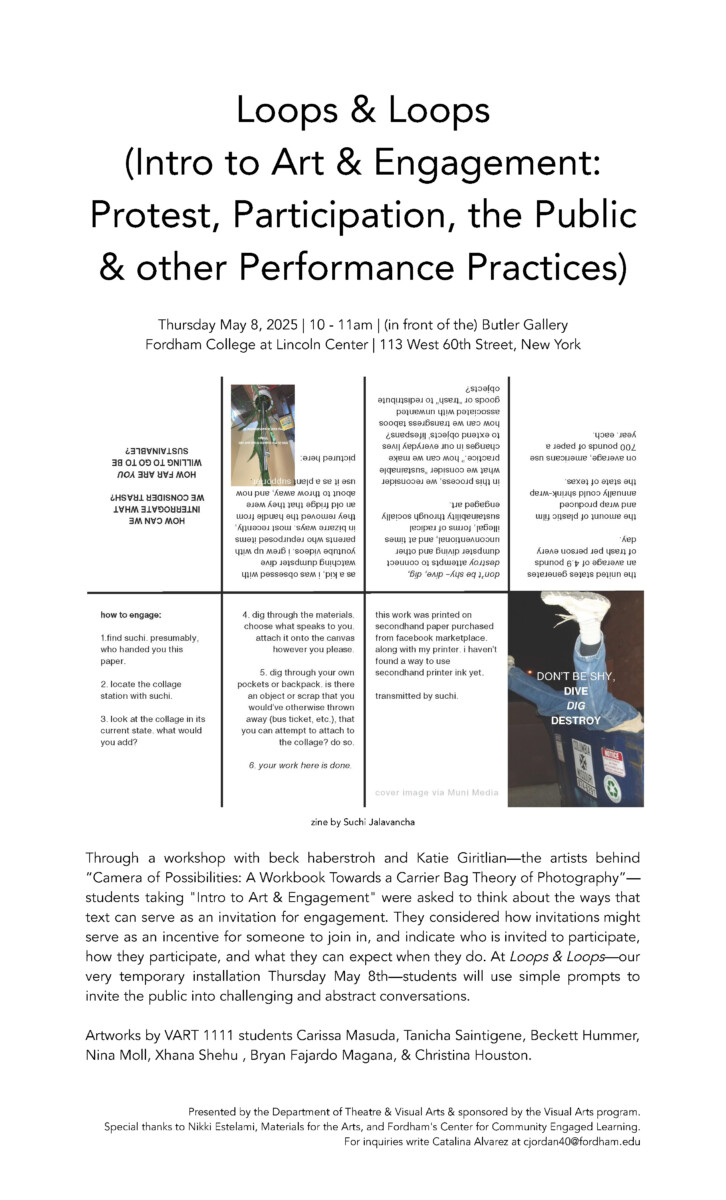


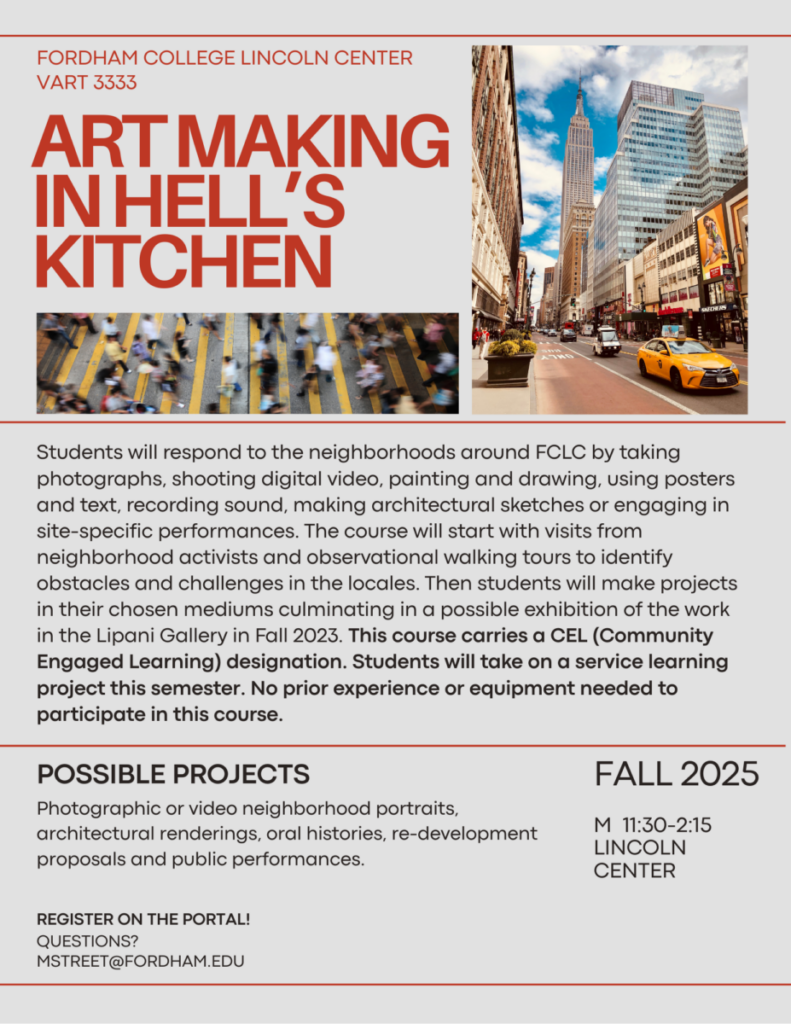
FCLC, McNally Amphitheatre | 140 W 62nd St, New York, NY 10023
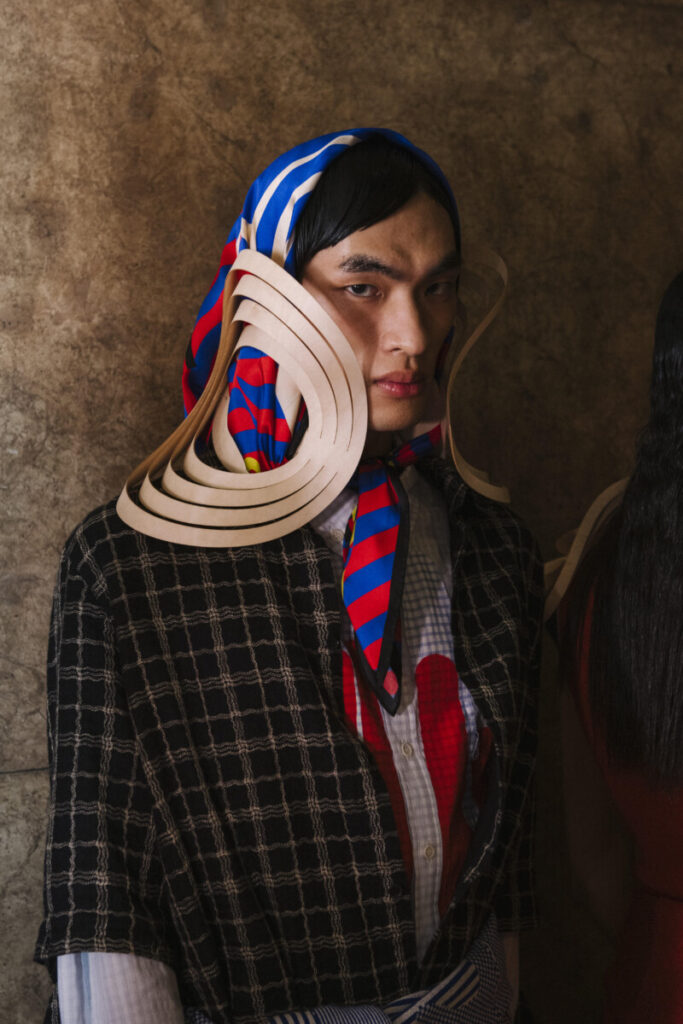
Join us for an evening of conversation about fashion and sustainability with renowned designers Henrik Visbskov (Denmark) and Brunela Ramirez (Peru). Our guests will discuss their design philosophies & how to create a collection from idea to fabrication. Original designs and garments to be showcased!
Co-sponsored by A&S Dean’s Challenge Grant, Professor Connection Program, Center for Community Engaged Learning, Fashion Studies, Art & Engagement at the Visual Arts Program and Gabelli School of Business. Organized by Fashion Studies Program Director Robb Hernández & Fashion Studies Executive Board members Alexandra M. Thomas & Catalina Alvarez.
This event is presented in conjunction with Henrik Vibskov’s The Bank is Dead
Learn more about each designer:
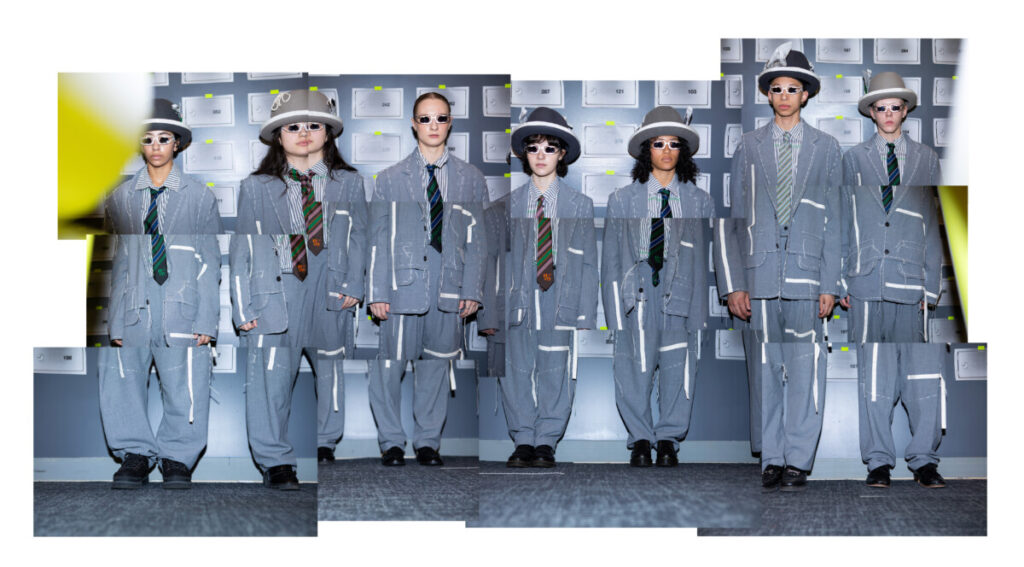
Featuring Fordham University students Kasey Orava, Reese Windust, Claire Galloway, Rylan K. Carrol, Luke Tressler, Kimberly Whitehall, Dylan Zavier Peralta & Jake Metcalf.
All photos by Victor Jeffreys II
Once a space of wealth and restriction, this former bank in Brooklyn New York was transformed into a soft, surreal stage. Inflatable structures pressed against the architecture, between floor and ceiling, like swollen memories of security, like the last breath of the institution trying to hold its place in a world that’s moved on.
The printed bank boxes hinted at past obsessions with protection and power. They fluttered, flew off with the slightest breeze, turning the walls into living symbols of financial volatility.

Dancers, dressed as bankers, performed a 10-minute ritual at regular intervals— echoing, mocking, and ultimately shedding the gestures of the financial world : Their gestures mimiced the mechanical rituals of old finance: stamping papers, tightening ties, shaking invisible deal hands. But gradually, their movements loosened, their rhythm broke, the suits become costumes rather than uniforms. A farewell to a broken system. A welcoming of creative chaos.
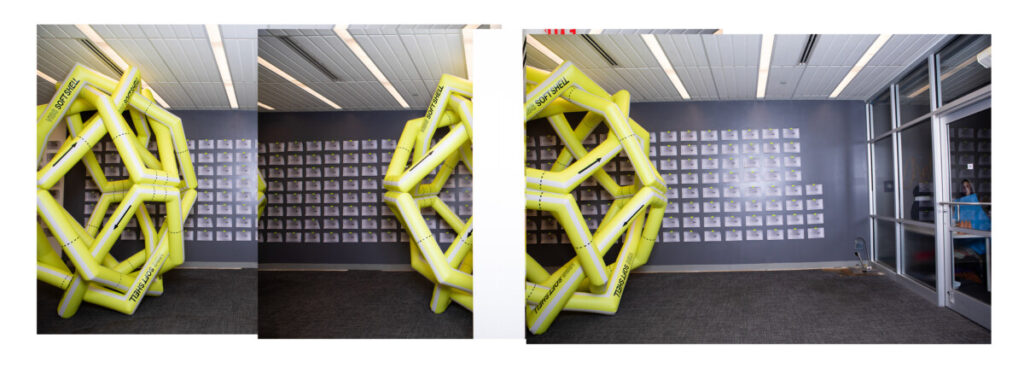
All visitors received a key to the bank box when they arrived at The Bank.

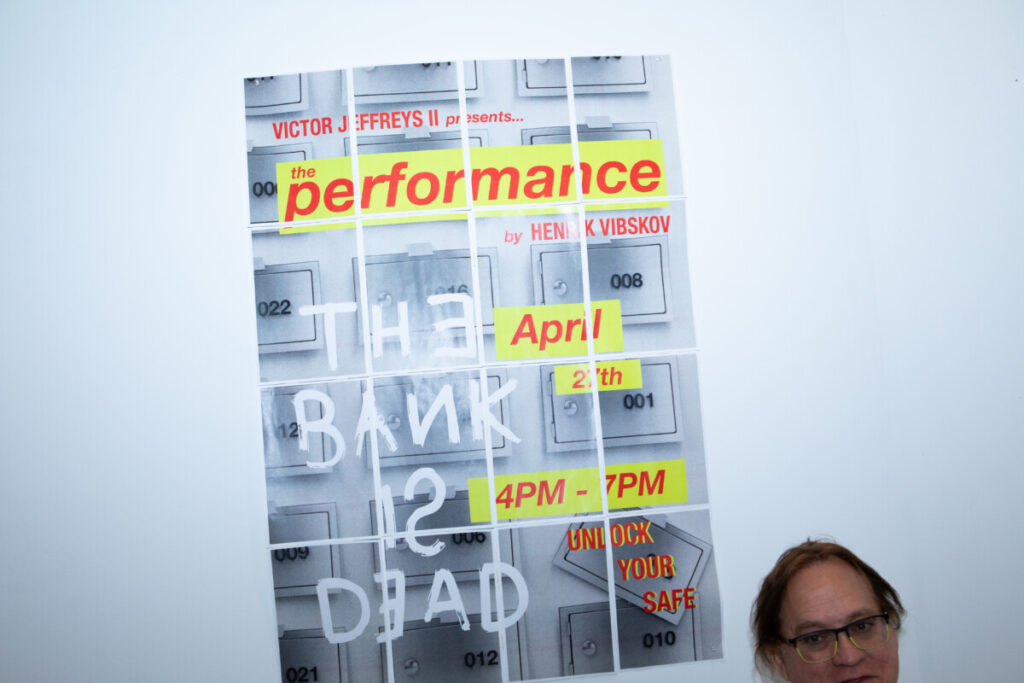
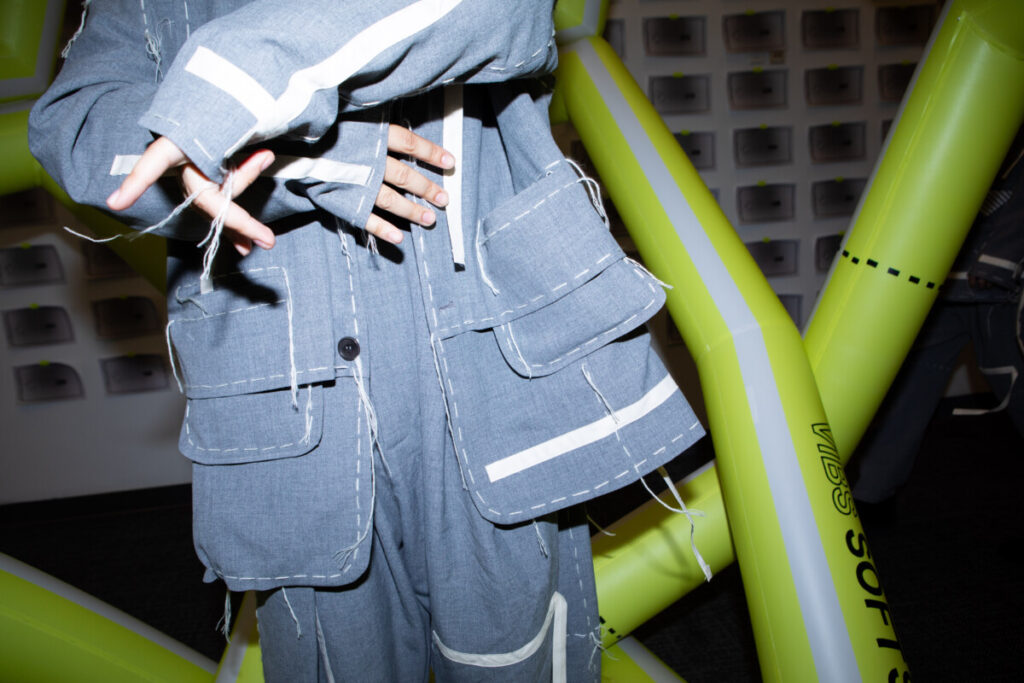
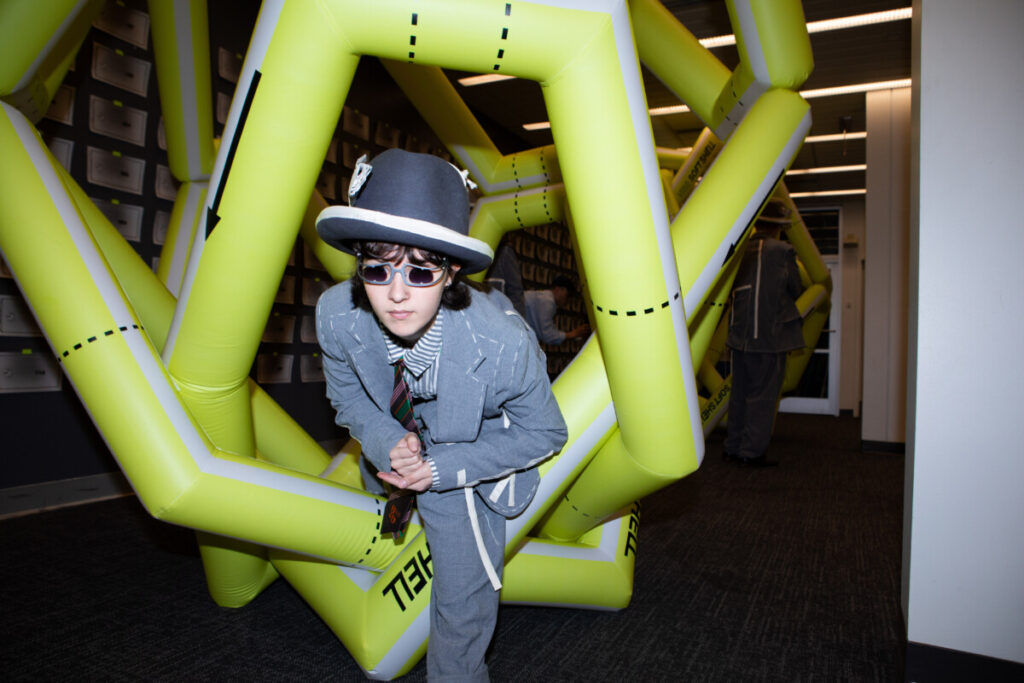
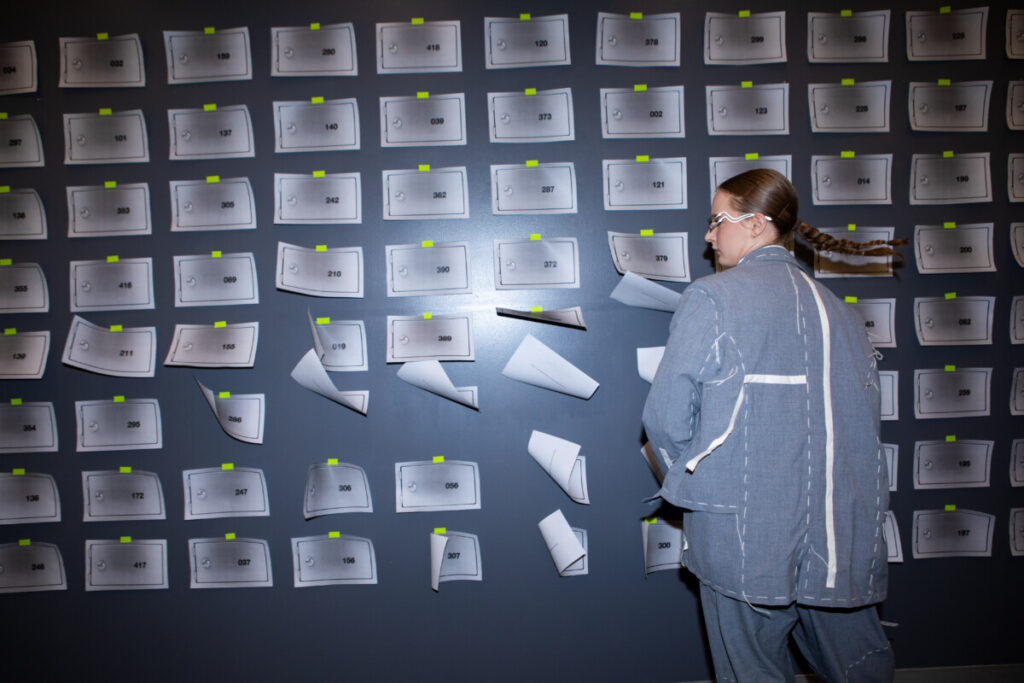
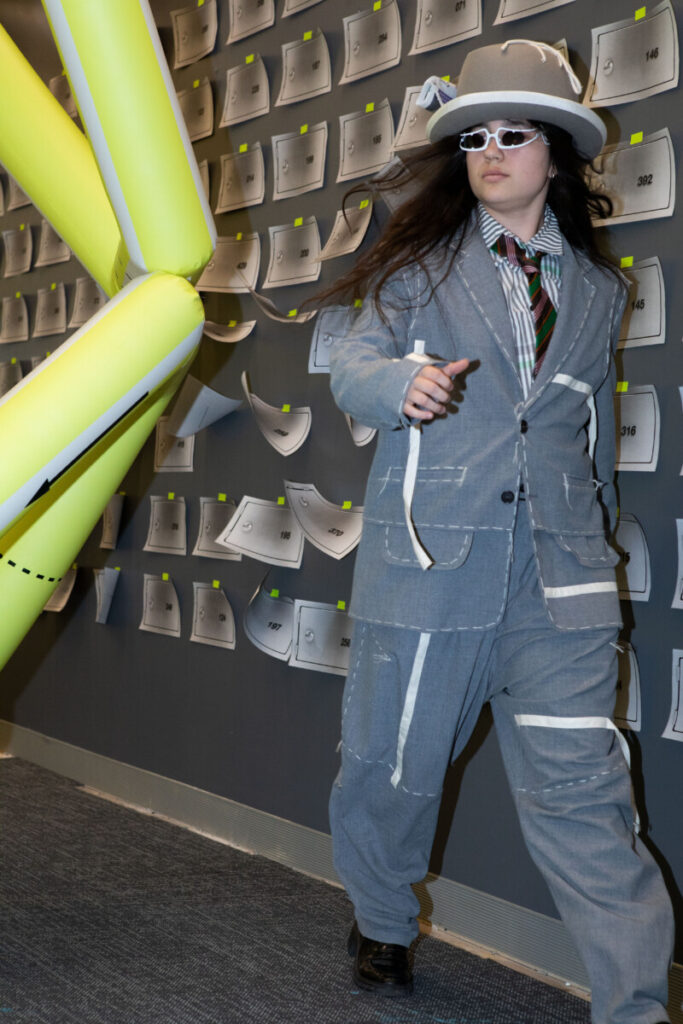
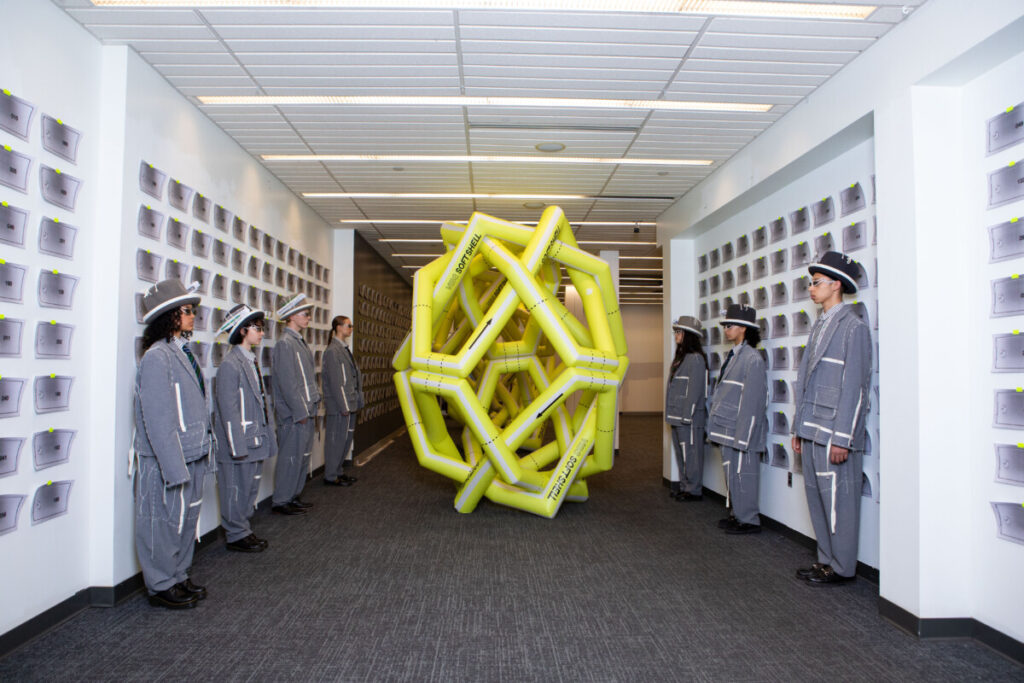

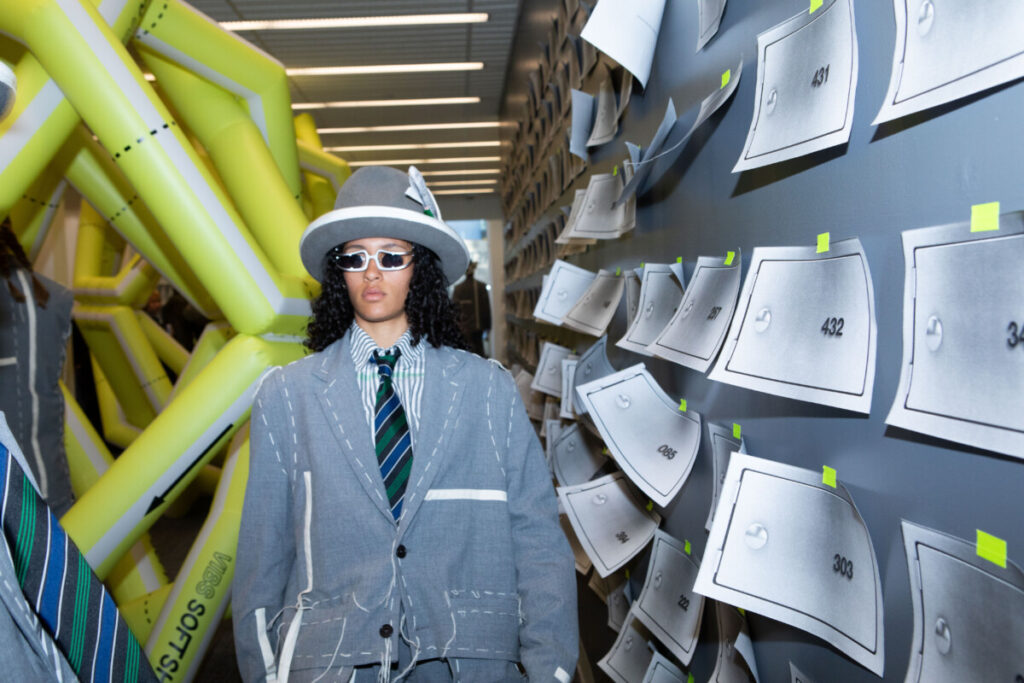
Fordham University – Henrik Vibskov- The Bank Is Dead – Victor Jeffreys II – mode PR
Presented in partnership with Fordham’s Art & Engagement & Fashion Studies programs and the Center for Community Engaged Learning. Fordham partnership organized by Catalina Alvarez, in conjunction with April 29th event “Iridescent Worlds“.
Who is Henrik Vibskov?
Henrik Vibskov is a renowned and award-winning Danish fashion designer, artist, curator and musician.
Although commonly associated with fashion and the twisted yet tantalising universes created around each collection, Henrik’s creative practice covers multiple platforms.
Working in the intersection between art and design, his work ranges from fashion collections to installation, performances and exhibitions, always exploring creativity without limits and adapting the design approach to the changing contexts.
Since his graduation from Central St Martin’s in 2001, he has produced more than 40 fashion collections and exhibited in several international design fairs, festivals and museums all over the world, including MoMA in New York, Palais de Tokyo in Paris, The 21st Century Museum of Contemporary Art in Kanazawa and the ICA in London, to name a few.
Next to the biannual fashion collections, he has also designed costumes for numerous operas and performances, including collaborations with Hotel Pro Forma, the Oslo Opera House, The Swedish National Ballet and the Brussels Opera House.
Most recently he designed the costumes for the ballet “Hammer” by Alexander Ekman at the Gothenburg Opera in Sweden.
As a musician, Henrik keeps himself occupied as a drummer currently with his band Luksus, who are to perform at Syd For Solen Festival 2023 in Copenhagen. He has also played with Hess is More, his own project Mountain Yorokobu, Mikael Simpson and Trentemøller, who he toured the world with for 6 years.
Thursday April 3, 2:30-5pm | Campbell Multipurpose Room, Rose Hill Campus
Limited number of free registrations here: https://forms.gle/DRsCapPNea5f22gVA
Kalamkari is a 3,000-year-old textile craft that originated as a medium of storytelling using a bamboo pen and natural dyes. This traditional art form involves at least 23 individual stages and is currently practiced only in Sri Kalahasti, India.
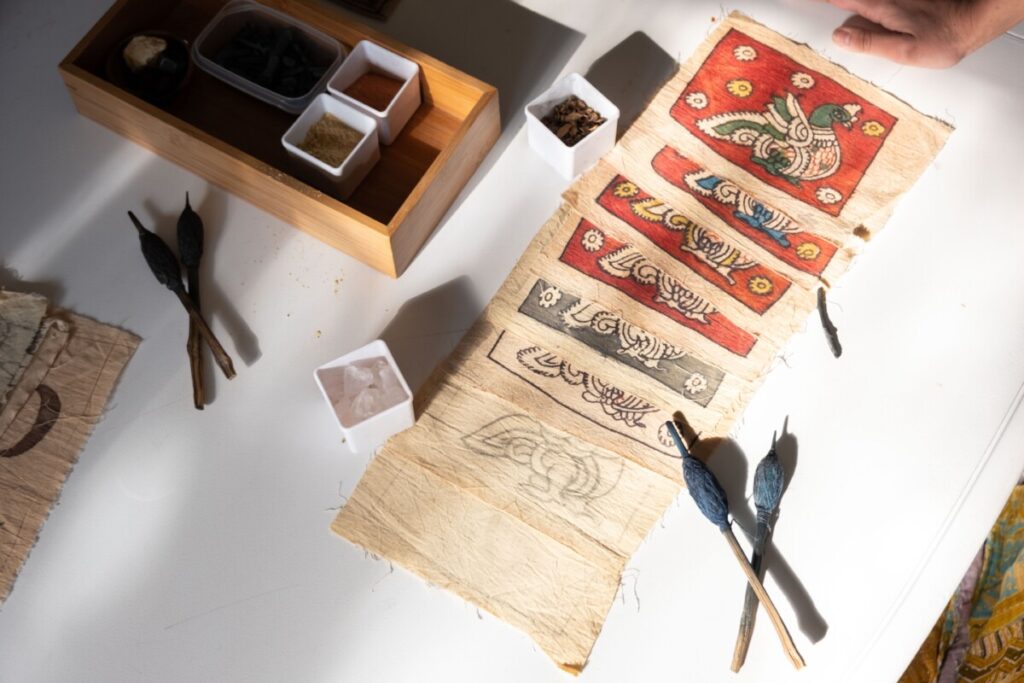
This workshop given by Fashion Designer Nikita Shah consists of a live demonstration and a simultaneous critical discussion of its history. Participants learn to create a simple piece of kalamkari.

WORKSHOP STRUCTURE:
Brief presentation on history of Kalamkari (30-40 mins)
Demonstration & creation of kalamkari piece (1-2 hours)

Website with more info: https://www.un-title.com/workshops
This workshop is co-presented by Fashion Studies, Art & Engagement and the Center for Community Engaged Learning. Organized by Catalina Alvarez.
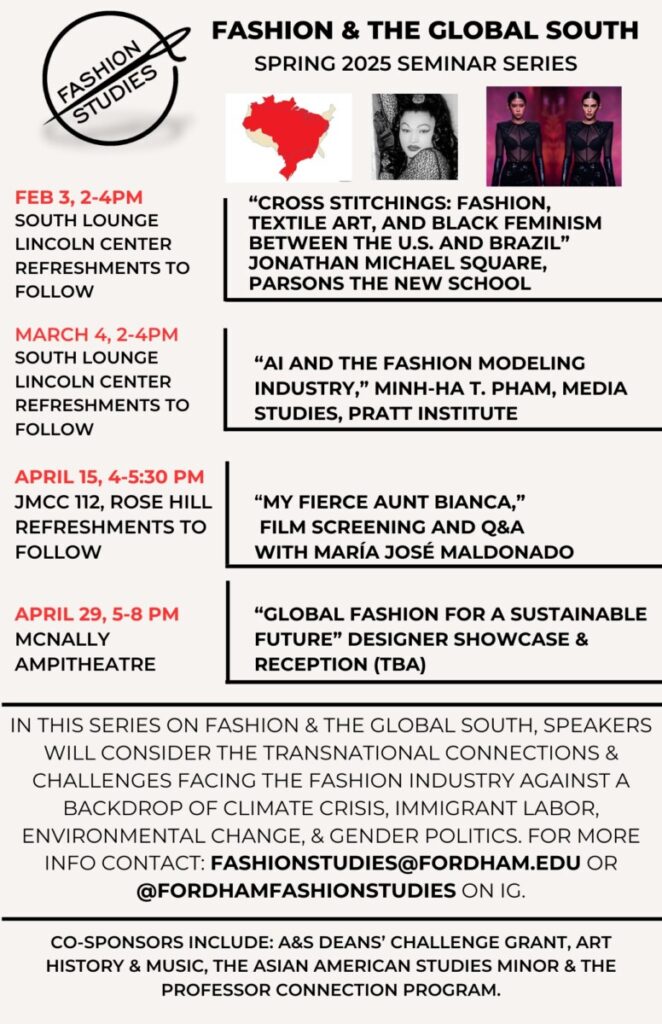
The Fall 2024 semester of “Art and Action on the Bronx River” at Fordham culminated in an array of 12 individual student projects ranging from a mini-documentary, to a dance piece, to a 24-mile walk, as well as a number of other artworks. Taught by Professor Matthew López-Jensen, the course explores the intersection of art, ecology, and history, specifically focusing on the Bronx River and the communities surrounding it. For their final projects, students were tasked with creating ambitious works that responded to the river in creative and thought-provoking ways.
Emerging artist Tori Garcillano has taken to the Bronx River to create a statement piece that implores viewers to consider the ways in which the art of dance can allow people to honor their bodies and surroundings. Her question is as follows: dance does not only exist in studios or on stages but in the very way that we interact with the world around us.
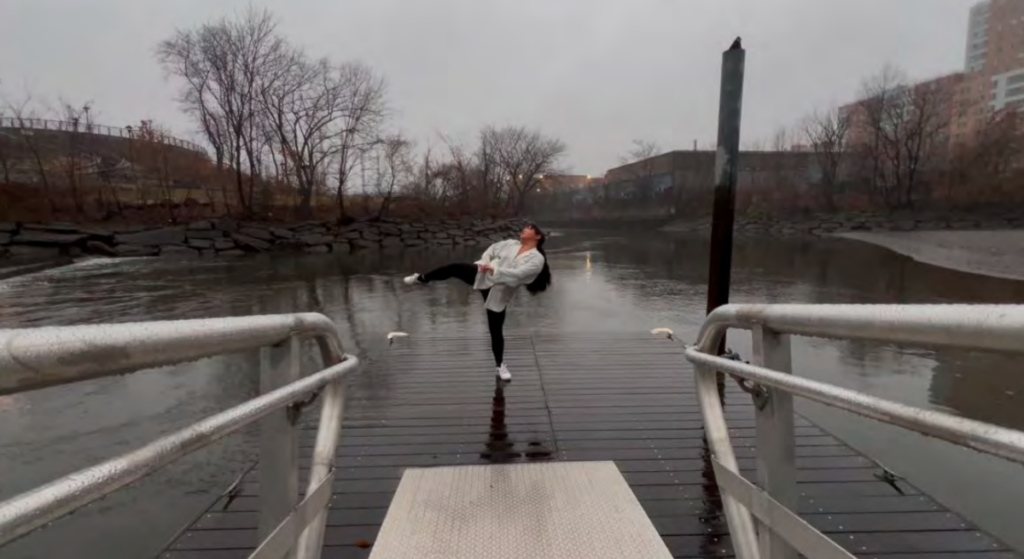
In this video piece, Garcillano dances her choreography on a dock atop the Bronx River at Starlight Park, directly across the way from the Bronx River House. In between moments of choreography, she has added brief clips of sights from the riverbank, focused mostly on the movement of the water. Just as water
creates reflections, Garcillano views her movement as a reflection on the ways in which dance is an expansive art form that exists beyond the body itself.
Link to piece: https://youtu.be/i2AWfbS59aM
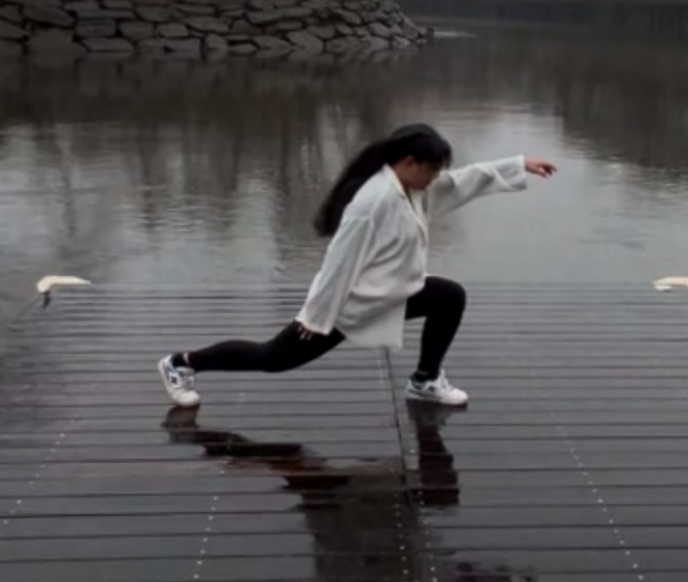
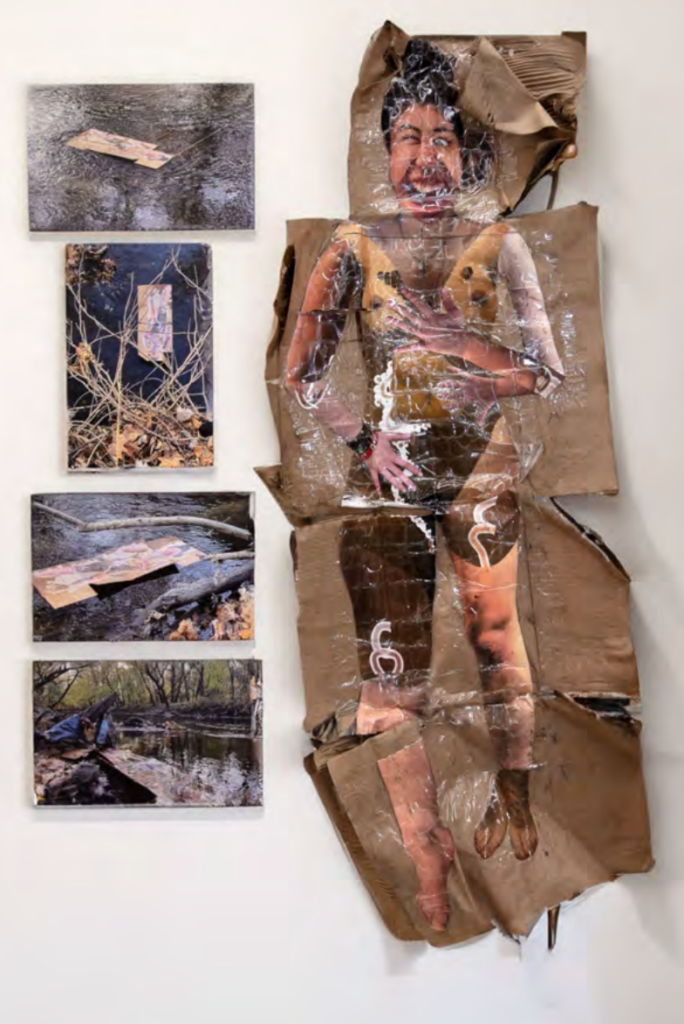
When asked to describe her piece, collage artist Julia Mancini said it all began with a question- “Can take your picture?” From here, she collected body parts: a foot from a friend, her sister’s leg, and her own two hands. Her goal was to create a physical creature, a conglomeration of the people in her life, to bring to the river. “I wanted to exaggerate the inaccessibility of reaching the river and construct a reality where I could bring all of these people there, a reality where they could even swim in it.” She sought to create a symbolic creature with Photoshop to be blown up, printed, and then secured to an outstretched cardboard box and sealed with clear packing tape.
Patrick Dolan embarked on a 9-hour trek spanning the entire 24-mile length of the Bronx River. His journey took him from the busy metropolis to the small forests of our city, capturing the diverse ecosystems that exist within the city’s veins.
The journey began at Kensico Dam in Valhalla, NY, and ended Soundview Park, where the Bronx River meets the East River, with the goal of trying to stay as close to the river as possible during the journey. The Bronx River, once a vital waterway, now flows through a landscape transformed
by urbanization, offering a unique perspective on the intersection of nature and human development.
Link to project: https://www.behance.net/gallery/215144205/From-Start-to-Finish-River-Walk
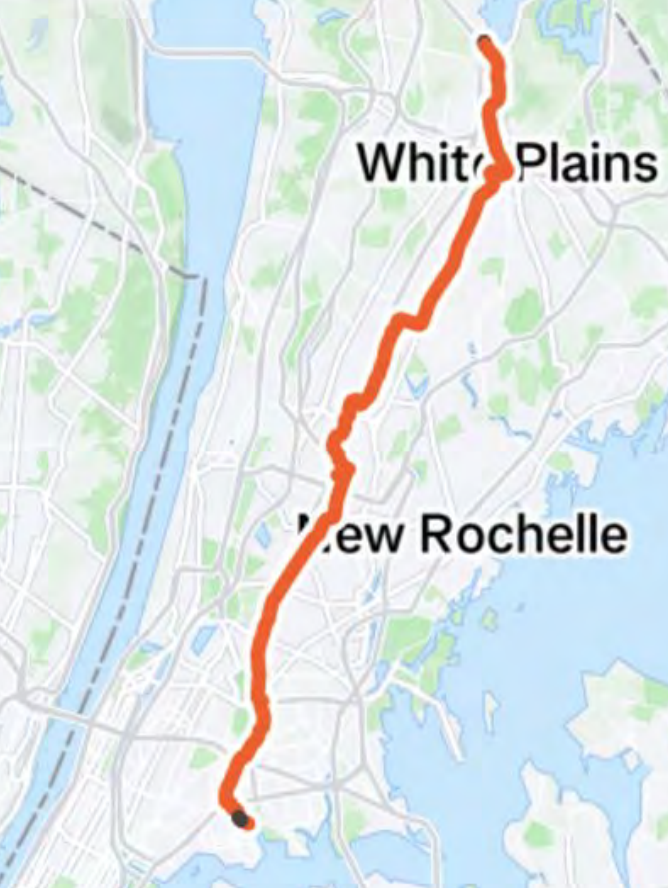
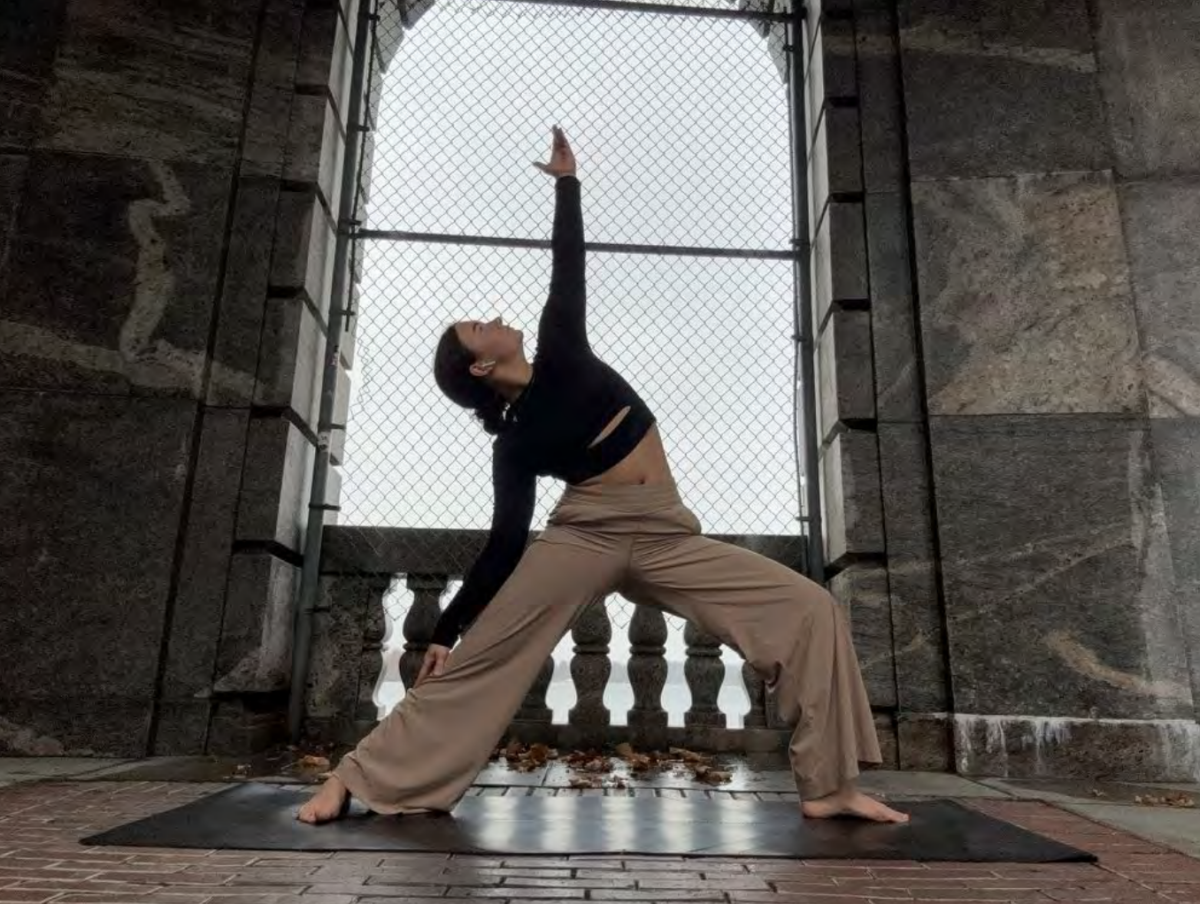
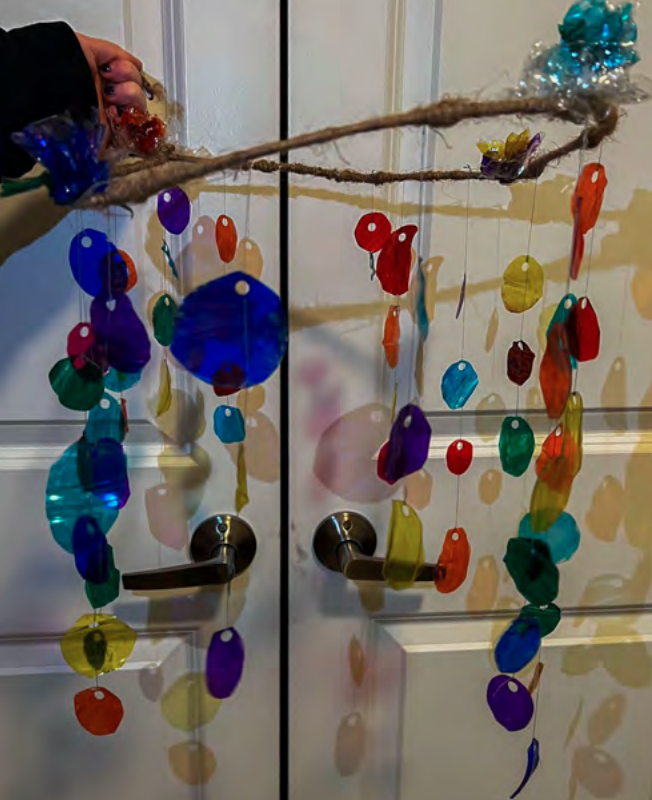
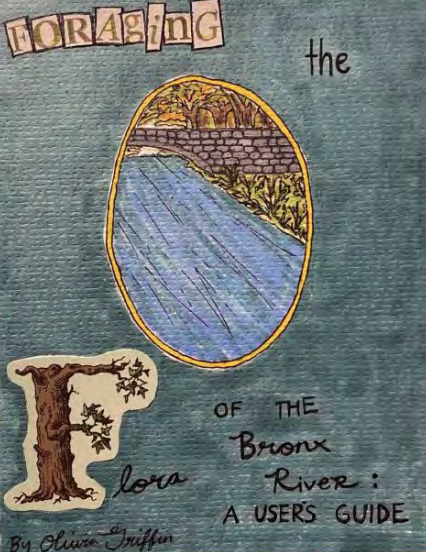

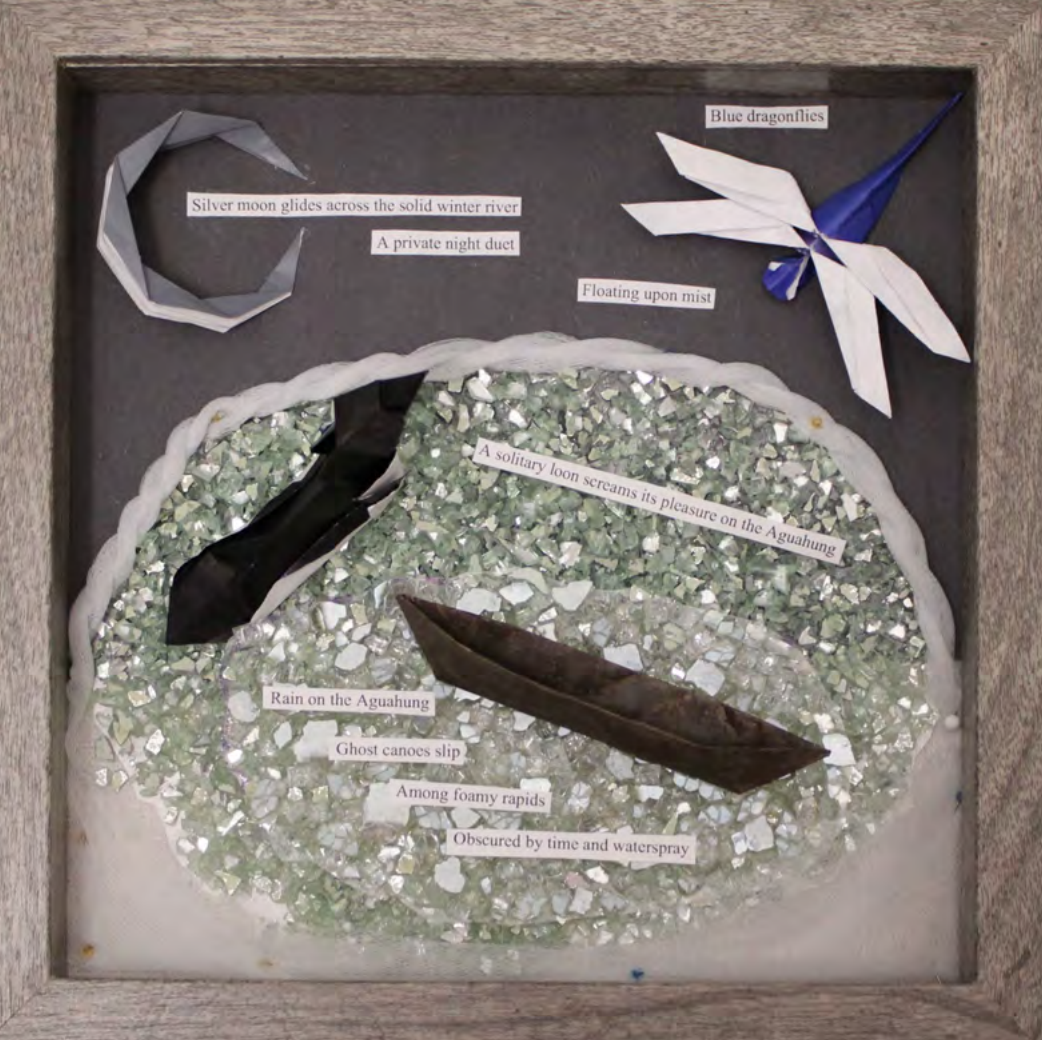
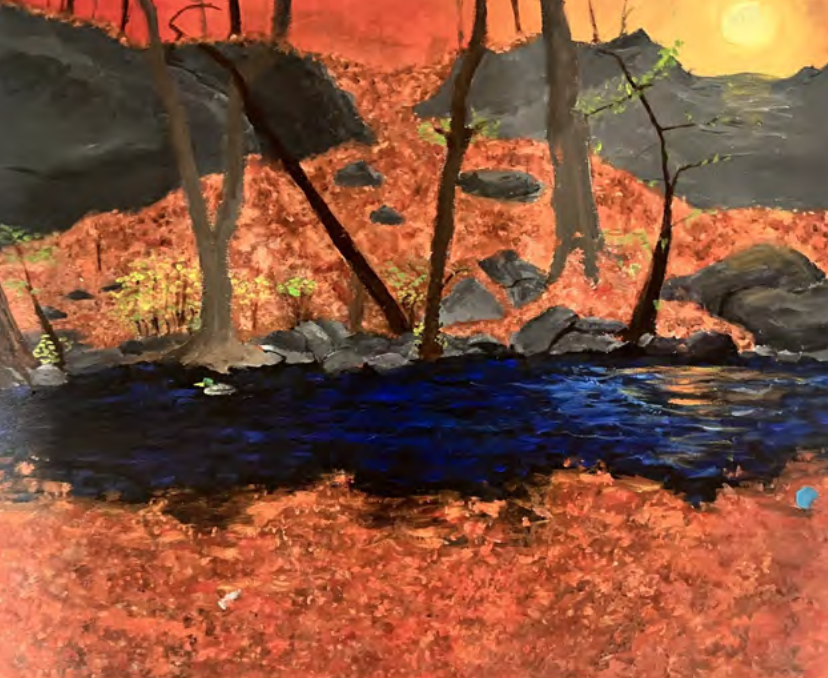

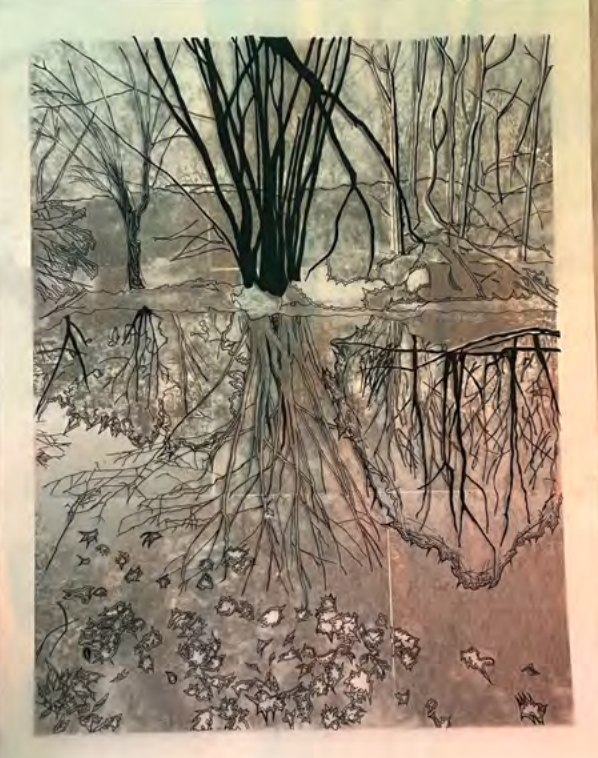
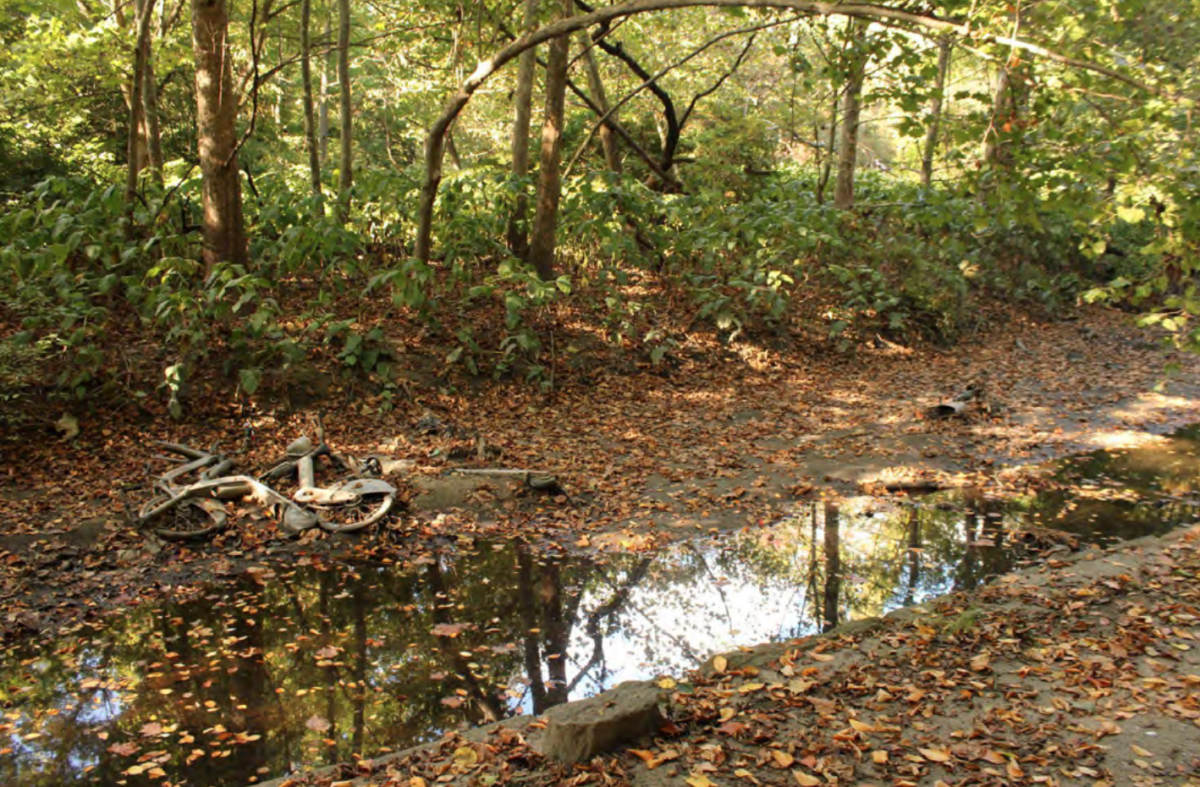
Artworks by students Maxanne Millerhaller, Nikki Phillips, Emily Torres, Olivia Griffin, Sofia Cordero, Guadalupe Vargas, Kelly Stanton, and Jonas Guzman.
On September 16, 2024, students in the “Intro to Art & Engagement” course visited Materials for the Arts (MFTA), New York’s largest creative reuse center, to collect their art supplies. Everything at MFTA is free, as it would otherwise be discarded and end up in a landfill!
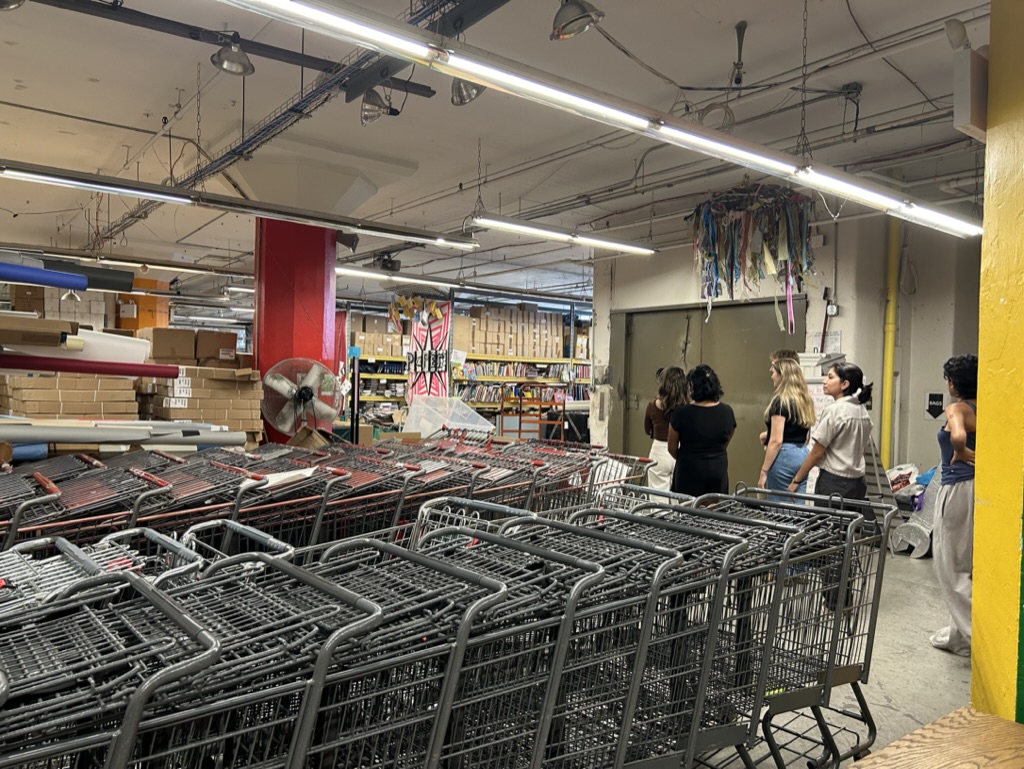
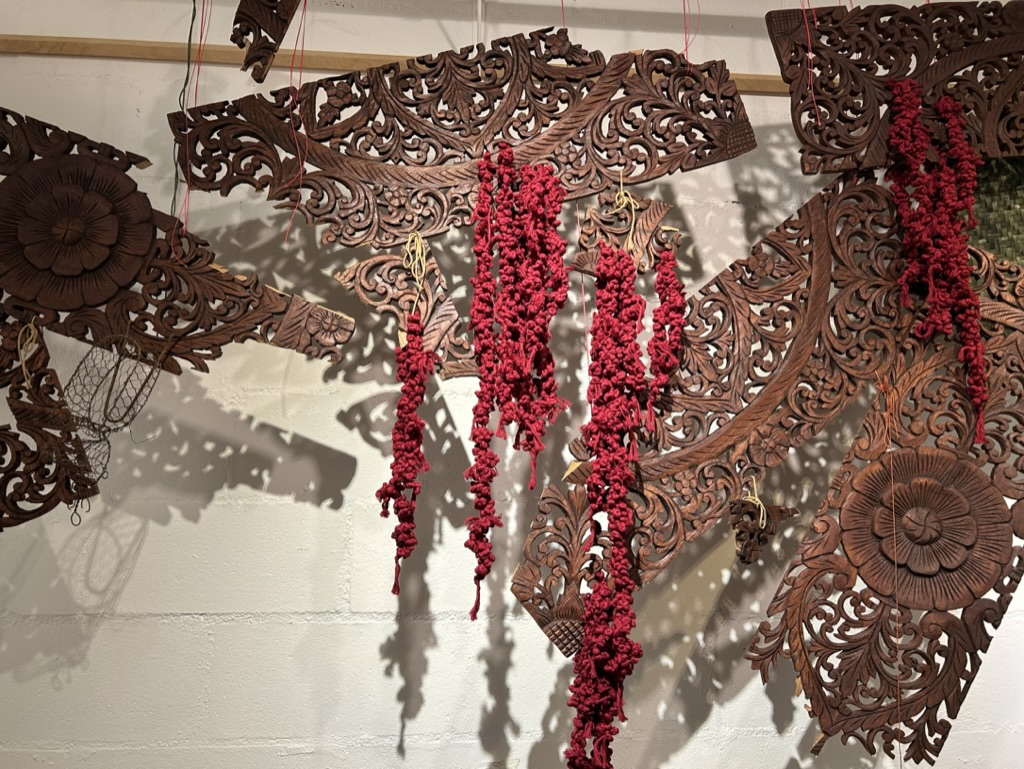
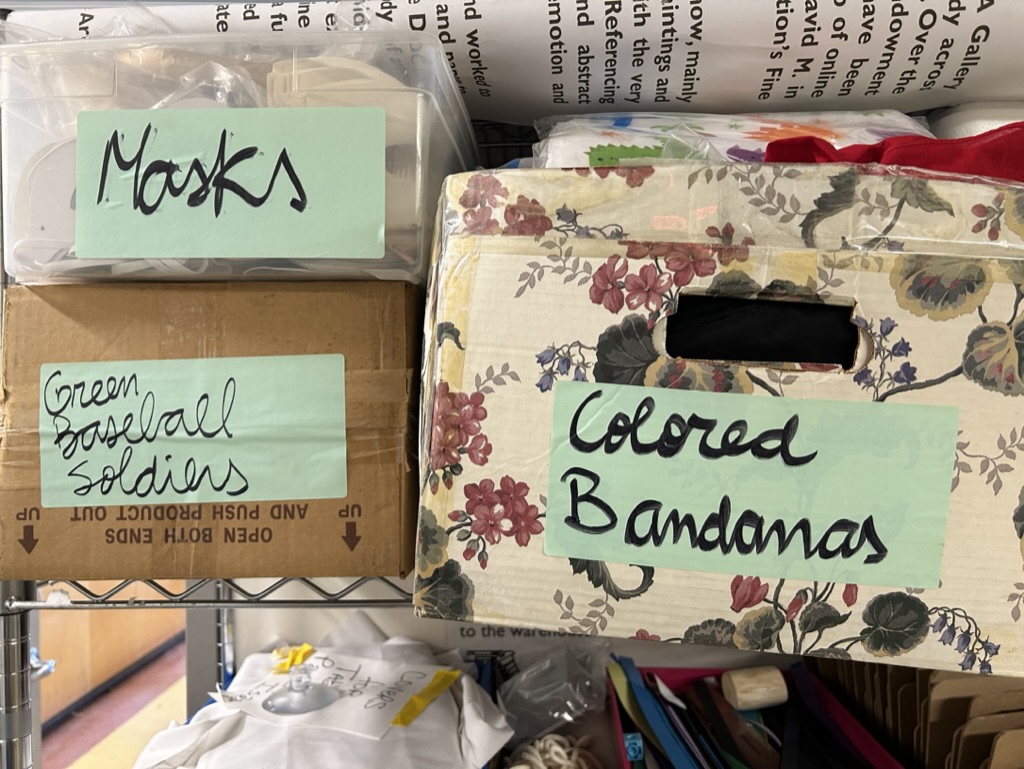
Afterwards, Education Coordinator, Will Niedmann, led students in a zine-making workshop, using found materials.
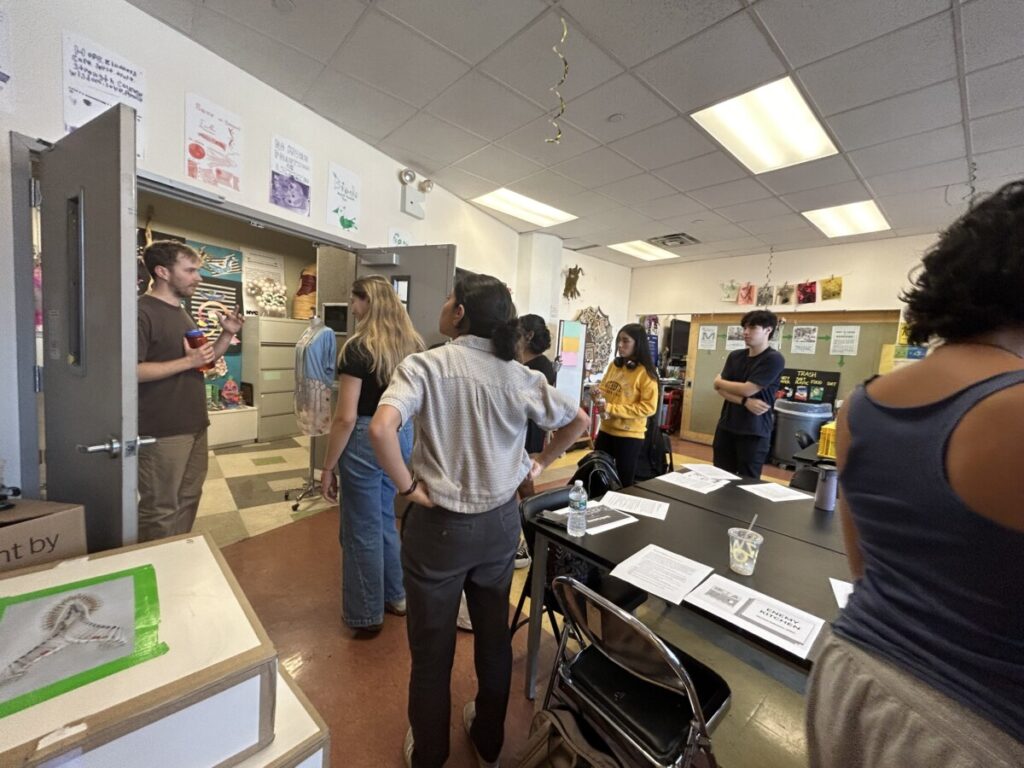
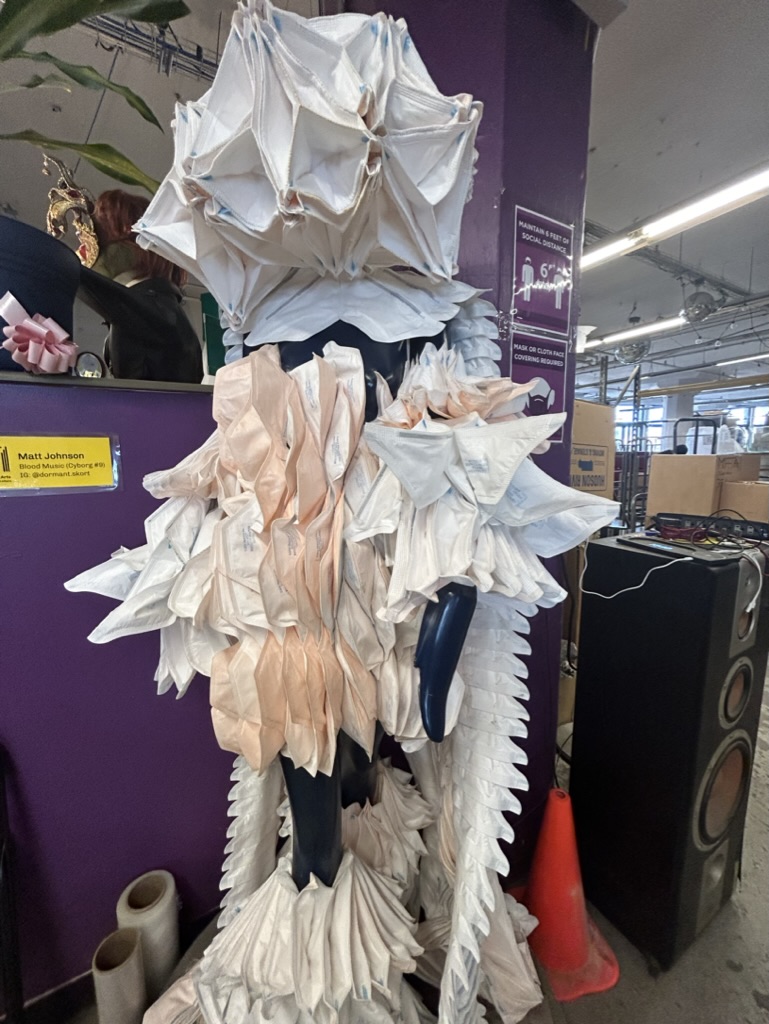
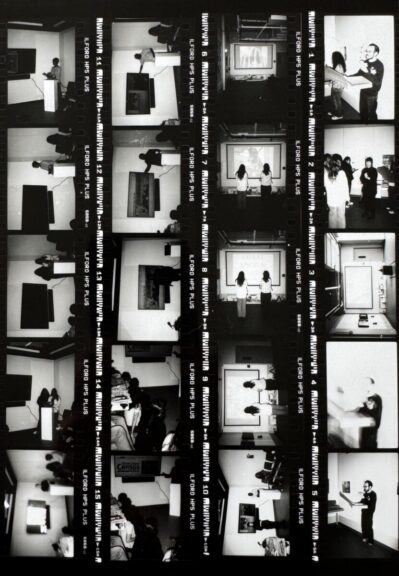
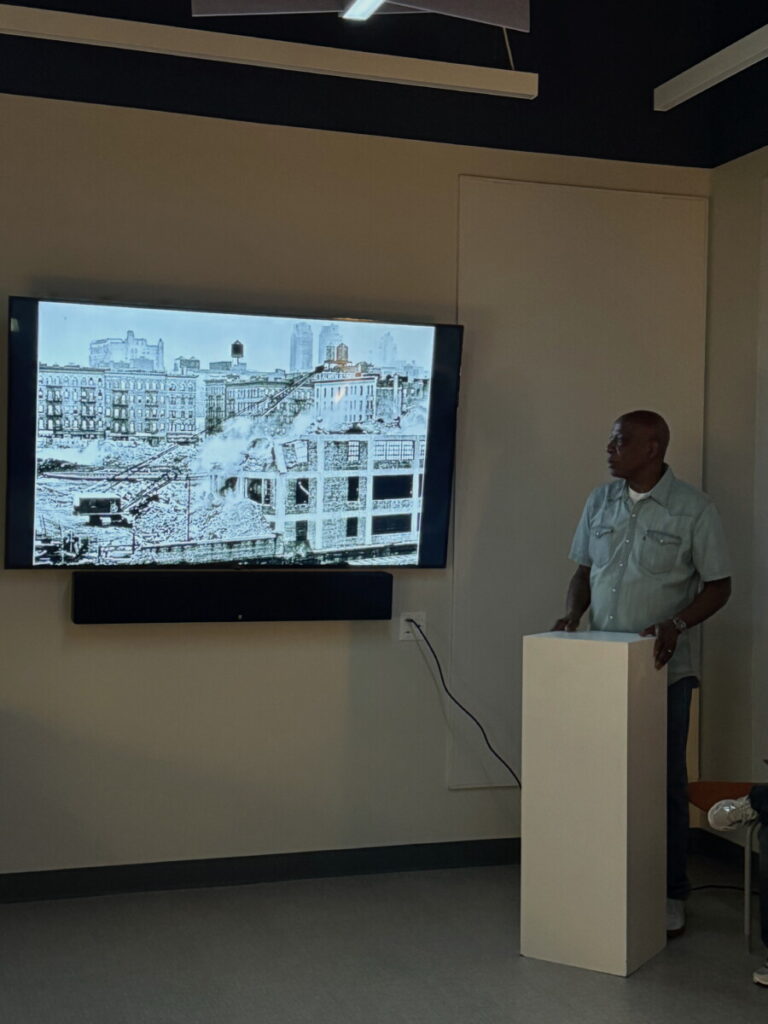
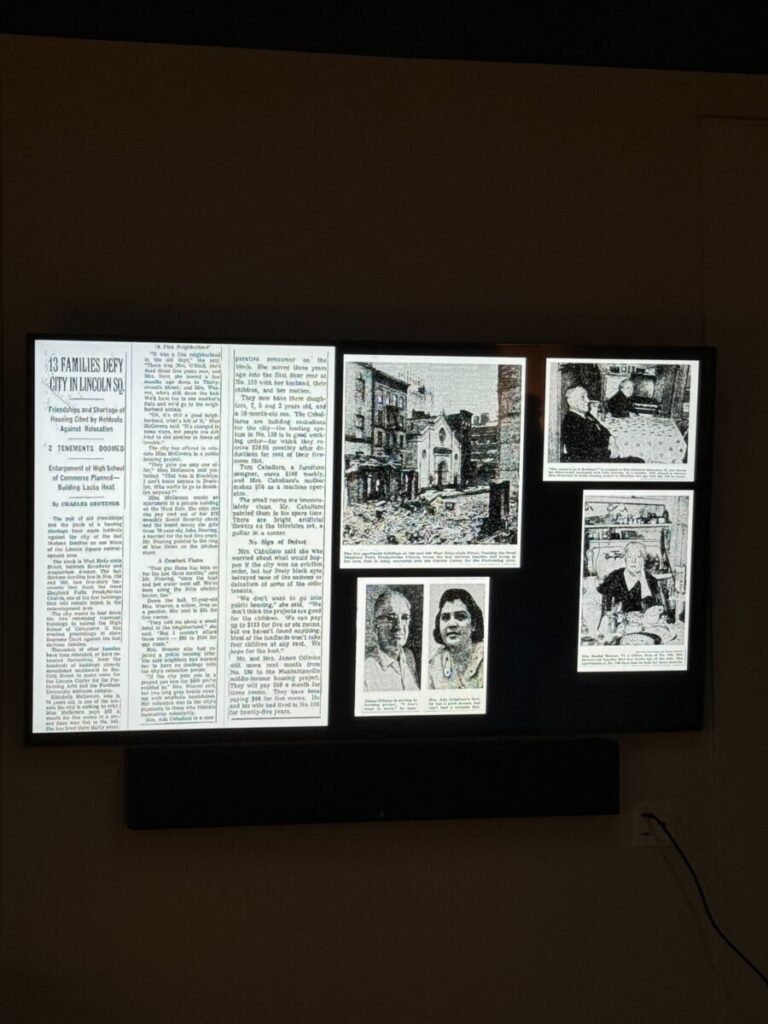
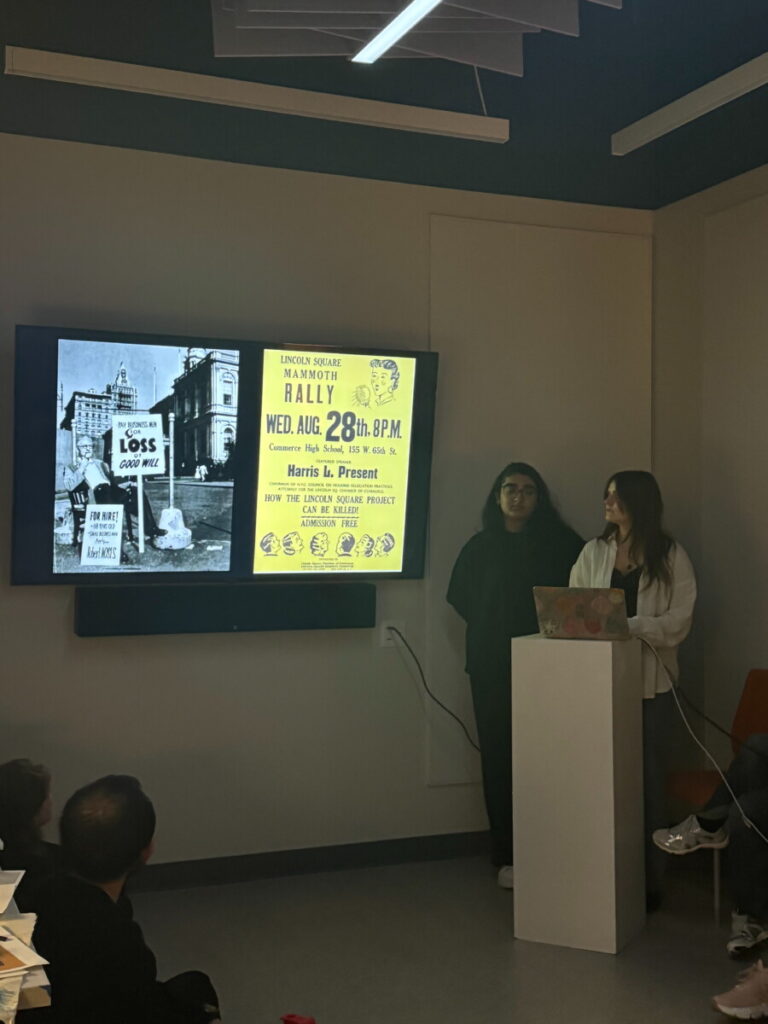
On Wednesday October 23, 2024, in the Lipani Gallery and the adjacent seminar classroom at Fordham’s Lincoln Center campus, there was a quiet and short multimedia installation by students and their interviewees studying the “art of the interview”.
After brief talks from representatives of Landmark West! (Executive Director Sean Khorsandi) and Good Shepherd Faith Presbyterian Church (Michael Nelson, Ronald Woods and Neal Matticks) on topics ranging from urban renewal to urban removal, students presented research talks they had developed with the help of New York Public Library staff (thanks to Mia Brunner of the NYPL General Research Division for her tremendous support, as well as her colleagues in the Picture Collection of the Wallach Division of Art, Prints and Photographs and the Milstein Division of United States History, Local History, and Genealogy).
The installation in the Lipani Gallery included this video by Fordham alumna Nikki Estelami, made with student field recordings and collages made by students and interviews from archival research at NYPL and Fordham University Special Collections.
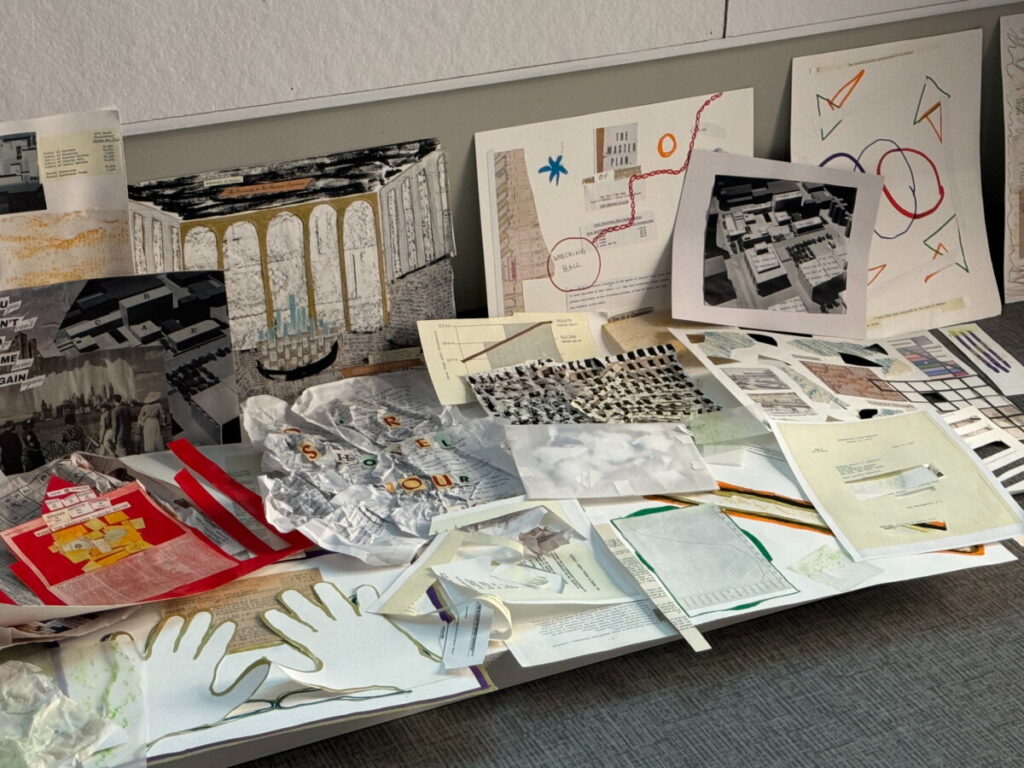
This isn’t oral history featured presentations by Fordham students Junhan Zhao, Tanvi Shah, Ash Wang, Bhavika Yendapalli, Eric Bishop, Meena Kabbani and Morgan Mueller.
The classes of Professors Fadi Skeiker and Stephan Apicella-Hitchcock attended, along with several other individual guests.
This isn’t oral history was presented by Fordham’s Departments in Theatre and Visual Arts, Anthropology and American Studies.
(Art of the Interview)
In VART 2222 Art of the Interview, students record interviews with elders who recount the history of the Lincoln Square neighborhood, which was demolished in the 1950’s to build Lincoln Center for the Performing Arts, Fordham College at Lincoln Center, and other developments.
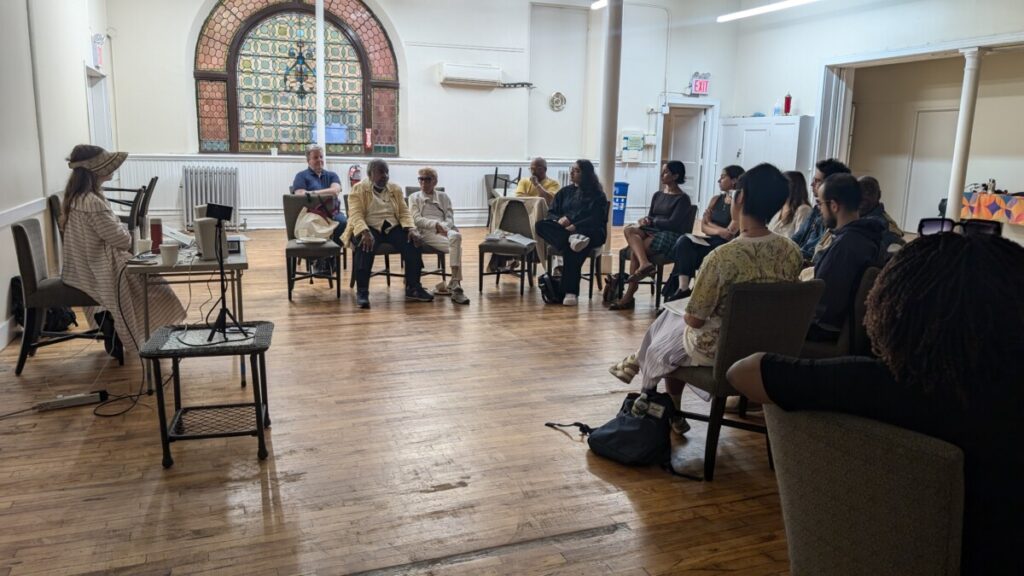
On Saturday December 14th, the Fall 2024 class presented artworks highlighting various stories at Good Shepherd Faith Presbyterian Church, where many interviewees are members:
Ash Wang created this animated collage video highlighting a story from an interview with Ronald Woods.
Good Shepherd-Faith Presbyterian Church, by the way, is the last standing church to predate the Lincoln Center urban renewal project that demolished the rest of the neighborhood, and has a rich civil rights history.
Meena Kabbani and Bhavika Yendapalli created this piece from this interview with Michael Nelson, Harold Thomas, Debra Washington and Ronald Woods.
Eric Bishop features another Ronald Woods interview in this piece
Video by Morgan Mueller and Tanvi Shah, featuring a story told by Michael Nelson, Harold Thomas, Ronald Woods and Debra Washington
Here is Junhan Zhao’s video featuring stories told by Ronald Woods, Michael Nelson and Debra Washington.